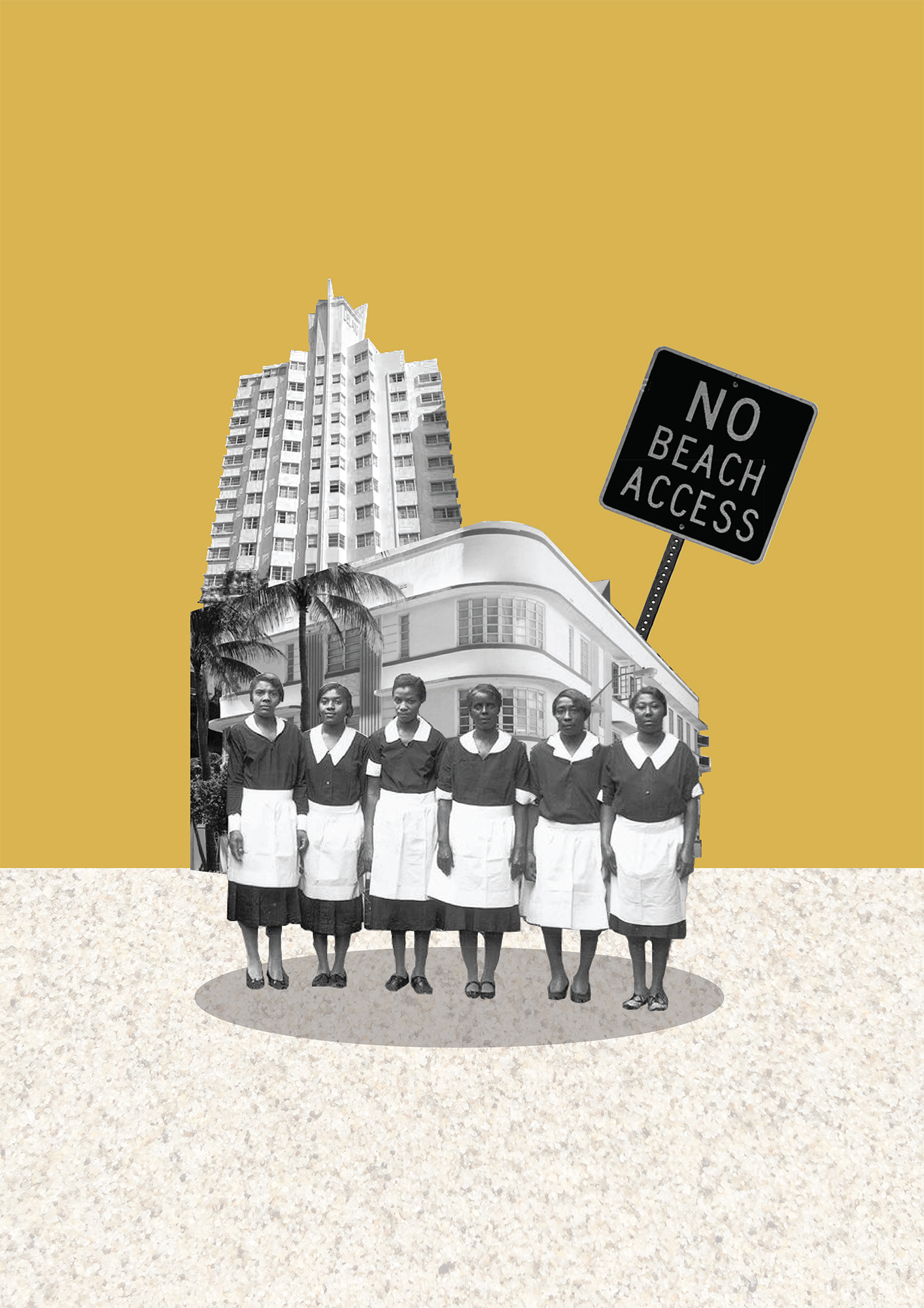
This summer, in the midst of a global health pandemic, acknowledgement of another, longer term and deeper seated pandemic spread across the United States and then the world. Prompted by Black Lives Matter protests after the murder of George Floyd, this long overdue reckoning began first in the law enforcement industry then touched all others to reveal the anti-Black racism embedded in our culture, our education and our workplaces. The architecture industry, so intrinsically tied to the American Dream of metaphorically and physically building a place of one’s own, sprang to action with solutions for more open public spaces for expressions of dissent, dignified social housing and reformed prisons and justice facilities, in the name of achieving equity for all. Often not thoroughly acknowledged, however, was the industry’s own hand in causing that initial inequity, through racist urban planning policies like redlining that selectively segregated communities of color from resources that would allow an even capitalist playing field.
When physical solutions to unbuilding racism fail, what are the possibilities for the future of the built environment, and where should they begin? At New York’s Museum of Modern Art, a new exhibition, Reconstructions: Architecture and Blackness in America, explores these questions. Curators Sean Anderson and Mabel O. Wilson, along with Arièle Dionne-Krosnick and Anna Burckhardt, commissioned ten architects, artists and designers—Emanuel Admassu, Germane Barnes, Sekou Cooke, J. Yolande Daniels, Felecia Davis, Mario Gooden, Walter Hood, Olalekan Jeyifous, V. Mitch McEwen, and Amanda Williams—to design a project for a context in an American city of their choice that investigates the relationships between architecture, Blackness and racism. The brief was purposefully open in scale, in typology and even, in timeline with many participants melding, compressing or expanding time periods or reimagining historical pasts to allow for new possible futures. Its result is a new canon of architectural ideas that reflect a holistic consideration of the racist origins of their sites and an inherently multidisciplinary approach to redesigning our built world. These projects imagine current building processes anew, in ways that acknowledge then reject their often racist origins.
In conversations around architecture, especially in the last year, many more people have begun talking about inequity in the design world and in our cities and non-cities. At MoMA, Reconstructions proves the power of those thoughts turned to conceptual actions: pointing out problems is a first step, but using available possibilities to imagine something different rather than prescribe to what, obviously, has not been working in the past is its important continuation. In conversation, curators Sean Anderson and Mabel O. Wilson discuss an architectural future like nothing we’ve seen before.
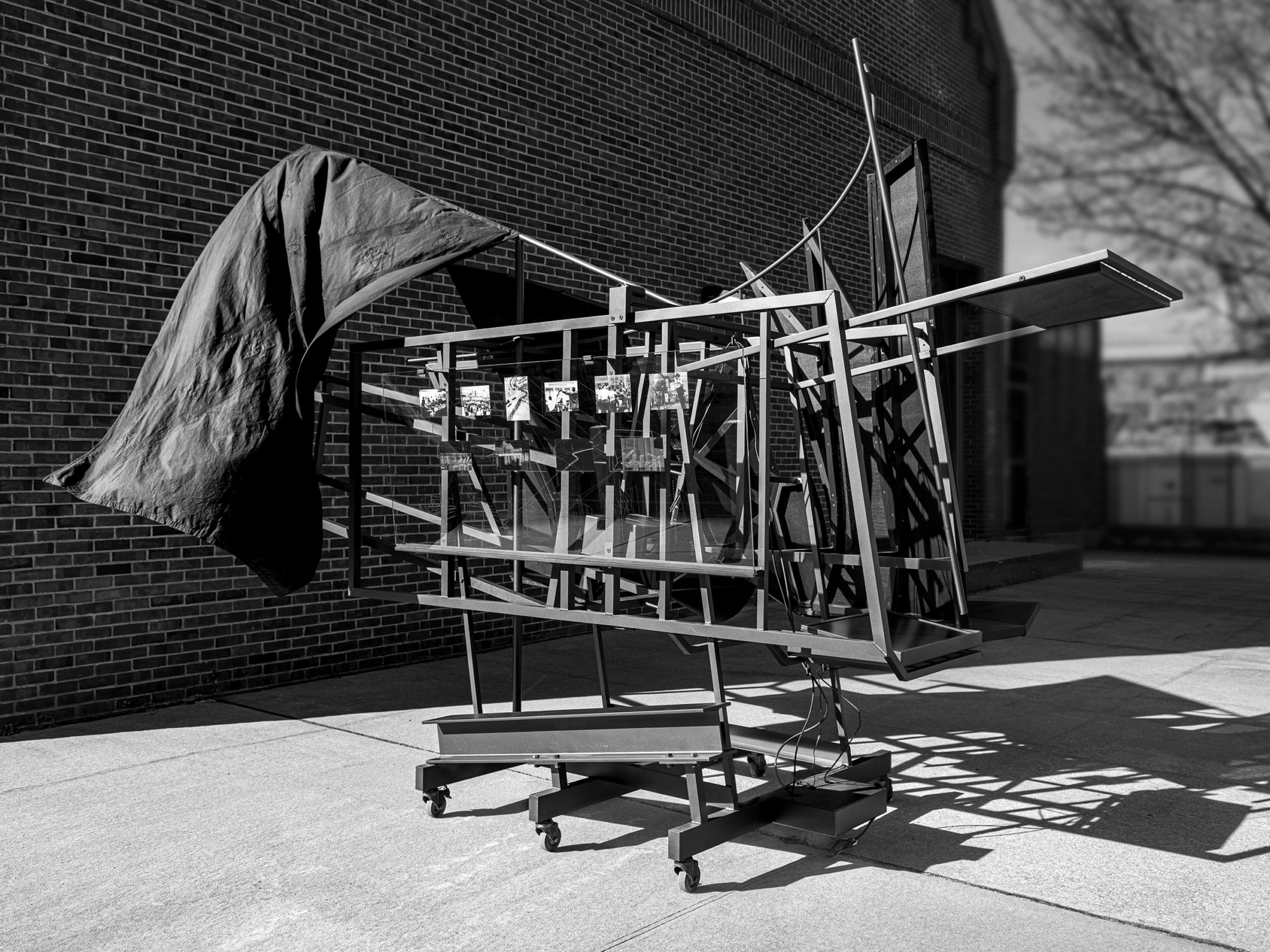
Elizabeth Fazzare: This show is very different for the MoMA contemporary architecture program in its display and its model. I find it to be a little more like a charrette, where everyone is presenting their concept designs. Can you talk about the organization of the show and why you chose to depart from the previous model of solution-based or physical project-based shows?
Sean Anderson: Thinking through previous exhibitions, they're not necessarily imperative but maybe they began as imperative ideas. From the beginning, our idea had been that we would commission these “projects,” but those conditions were based on a rethinking of the ways in which architects, or artists, are generally commissioned to do any work in that we did not want to give anyone a specific site. We did not want to give anyone a specific typology but rather use what became our sounding board, an advisory committee that Mabel, Arièle Dionne-Krosnick and I began, to really try to challenge the ways in which architecture is commissioned, as objects or as work in a museum.
And so we came up with what we call a matrix, organized into scales, spaces and/or contexts. We asked each of the participants to respond to these contexts in their own way with their own research. But from the start, we knew that we wanted to work across the nation, ten cities, and, and then the scales were things like the kitchen table, the front porch, the sidewalk. These spaces in which communities and individuals and cultures and societies begin to intersect in very profound ways, but often are discounted or not even considered in the making of states or the making of architecture. At the scale of states, for instance, those became the ways in which the accompanying field guide was organized: as a scale of imagination, scale of liberation, the scale of refusal, and so forth. These are ways in which we felt it extremely important to challenge the language that is being used, but also the very nature of commissioned work itself.
We had anticipated last March to have three community-based design workshops in which each of the participants would present their initial idea for their projects in the communities that they were exploring, so, Los Angeles, Atlanta, New York, etc. Those never happened, obviously.
EF: It's a shame that the pandemic meant that those kind of public community meetings couldn't happen, but I love the idea that you're using this show as a conceit for a better way to commission architecture, a process that includes the public, which is not the case in many cities for many projects.
SA: I would also argue, too, that the very nature of the American built environment is one almost wholly based on racial segregation and separation, the afterlives of which we see in the ways in which cities across America are either underfunded or lack infrastructure in certain areas because of of redlining. That initial impetus was also a way to supplant that history, and to move beyond it to say that actually even in the commissioning of architecture we can observe that past and that history but not be hemmed in by it or burdened by it for that matter.
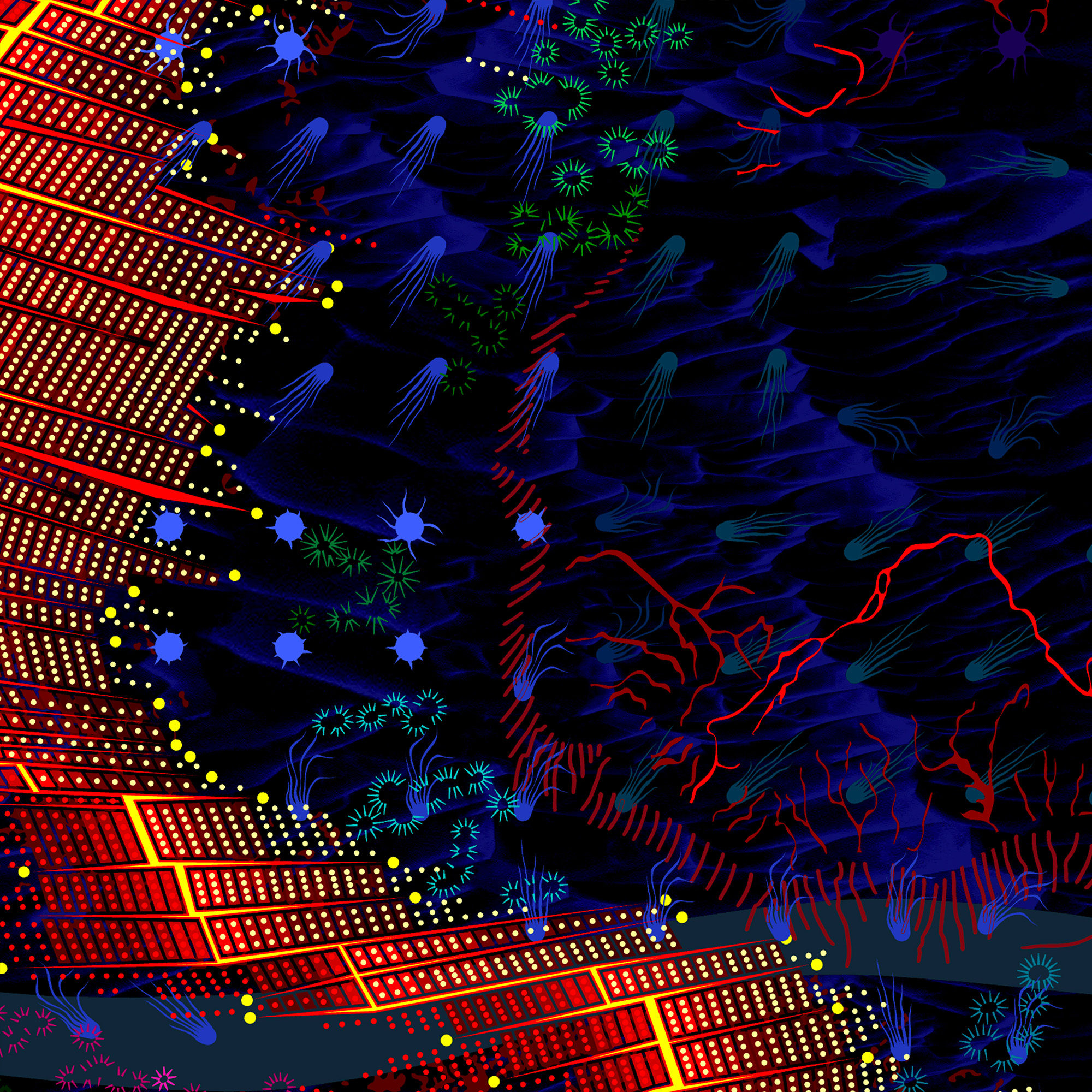
EF: Why was it important that you give each participant such an open brief, including an open brief of scale, which allowed them to approach a city or to approach a porch?
Mabel O. Wilson: It was a strategy to allow for a more creative interpretation. In typologies typically, it's a model, right? So it proposes a set of quantified, qualitative values to a building form, right? That's very specific. This is a bit more elastic. We tried to give the participants a sort of list that was a bit looser, but allowed for more interpretation, and that then could allow for the discovery of Black spatial practices. We wanted to try to allow it to be open, to be a bit more porous so that people could have that poetic sense of how you interpret this brief.
EF: The obvious end of an open-ended question is that you have such a diversity of ways that these participants have interpreted that brief.
SA: Absolutely. Because there were other contexts as well, such as joy or grief. How does one design or imagine joy? How does one respond to grief, whilst thinking about the city and the spaces of the city that for so long has been predetermined or over determined, in many cases, to limit or dissolve those kinds of ideas, emotions or activities?
MOW: It's hard to give it space to imagine the possibilities. Like you could go to Brooklyn and see poverty, the legacy of redlining, but you could also imagine: what other possible futures could there be for Brooklyn? What other histories don't we see? We were trying to prompt a kind of refusal of the ways in which Blackness or spaces in which Black people inhabit, particularly with architecture, come with certain kinds of negative truth, and to try to be more poetic, more creative, more visionary about what that can be while also about recognizing the legacy of white supremacy and anti-Black racism because that is quite real.
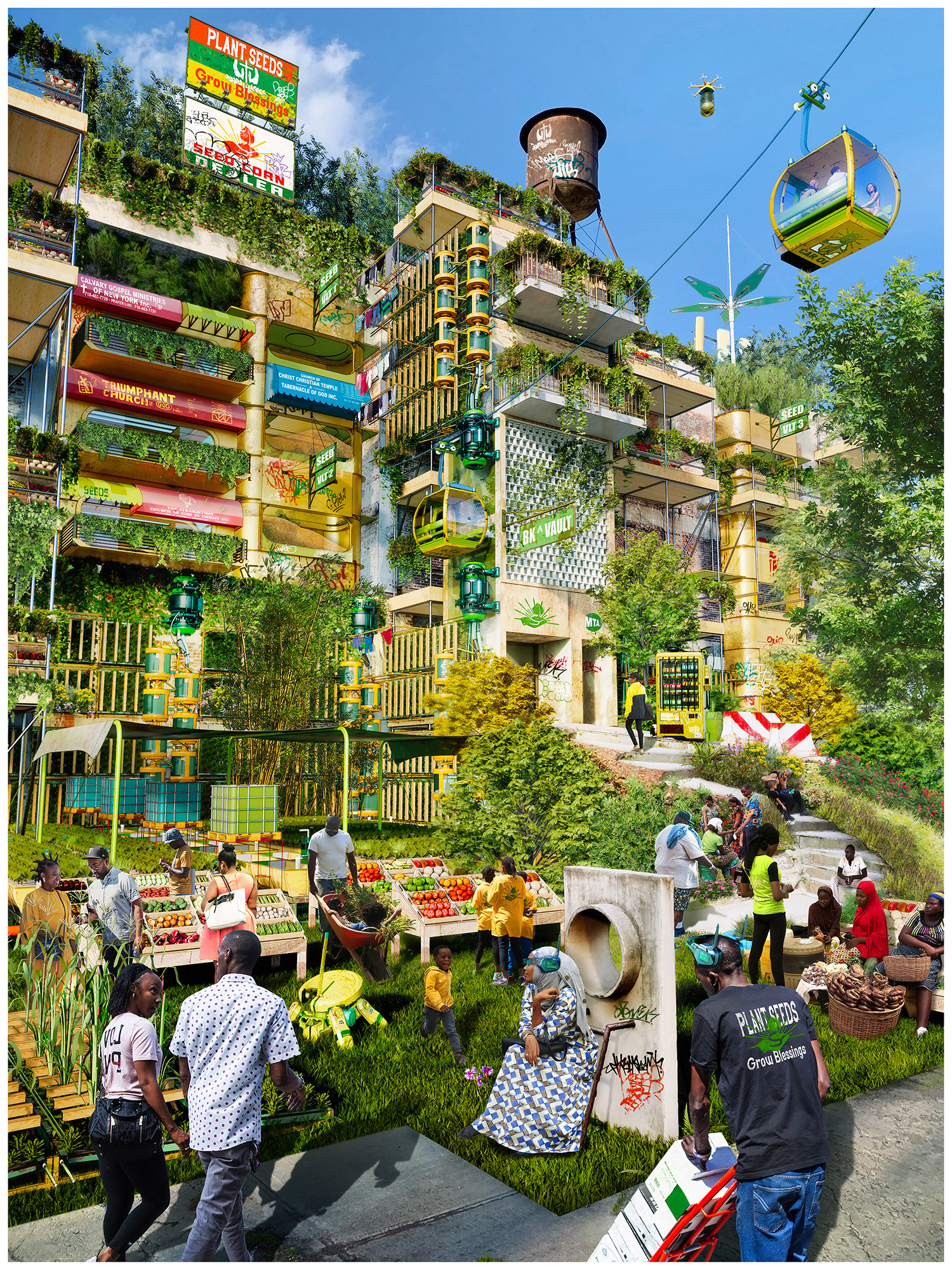
SA: That expansiveness leaves open the possibility and potential for rethinking all of these systems and these structures that have, again, defined the ways in which people live, but also how they live and where they live. By opening that up, and by refusing, as Mabel said, those limits, we can actually imagine a completely different future.
EF: How do the ten cities’ case studies—the projects that each participant has completed in these contexts—help reveal the larger picture of inequity and racism in the built environment?
SA: In each case in each city that is being explored, the participant began with the history, the literal and metaphorical ground of each city, and built their projects and their research around questioning why that history was specific to that city. For example, in Los Angeles, J. Yolande Daniels actually retraces the history of Central Los Angeles back to a freed slave woman named Betty Mason who saved money to buy properties across the city and at one time was one of the largest landowning individuals of early Los Angeles. Yolande traces that history, then begins to ask the question: why is this history erased? Overlaying that history with a contemporary lens, a predominantly 20th-century lens, that allows us to then think about why don't we use terms like South Central now; when you go to LA, it's not used. It's not common parlance because it has a negative connotation, when in fact, we know that South Central was and continues to be an incredibly dynamic part of the city, that by virtue of infrastructure, by virtue of these historical erasers, gets left out of the picture. In Yolande's case, she's building the platform so we can look at and imagine Los Angeles completely differently.
Similarly, Sekou Cooke is looking at Pioneer Homes in Syracuse, New York, one of the first public housing projects in America, which gets divided by Interstate 81, physically but also, socially. Now that there are proposals to remove that portion of I-81, does it mean that that community comes back together? Probably not. Sekou’s project then inserts, first the past, in order to recognize a possible present and future. So I think that it was important for the individual participants to amplify and to strengthen, when necessary, those histories, but then also to move beyond that.
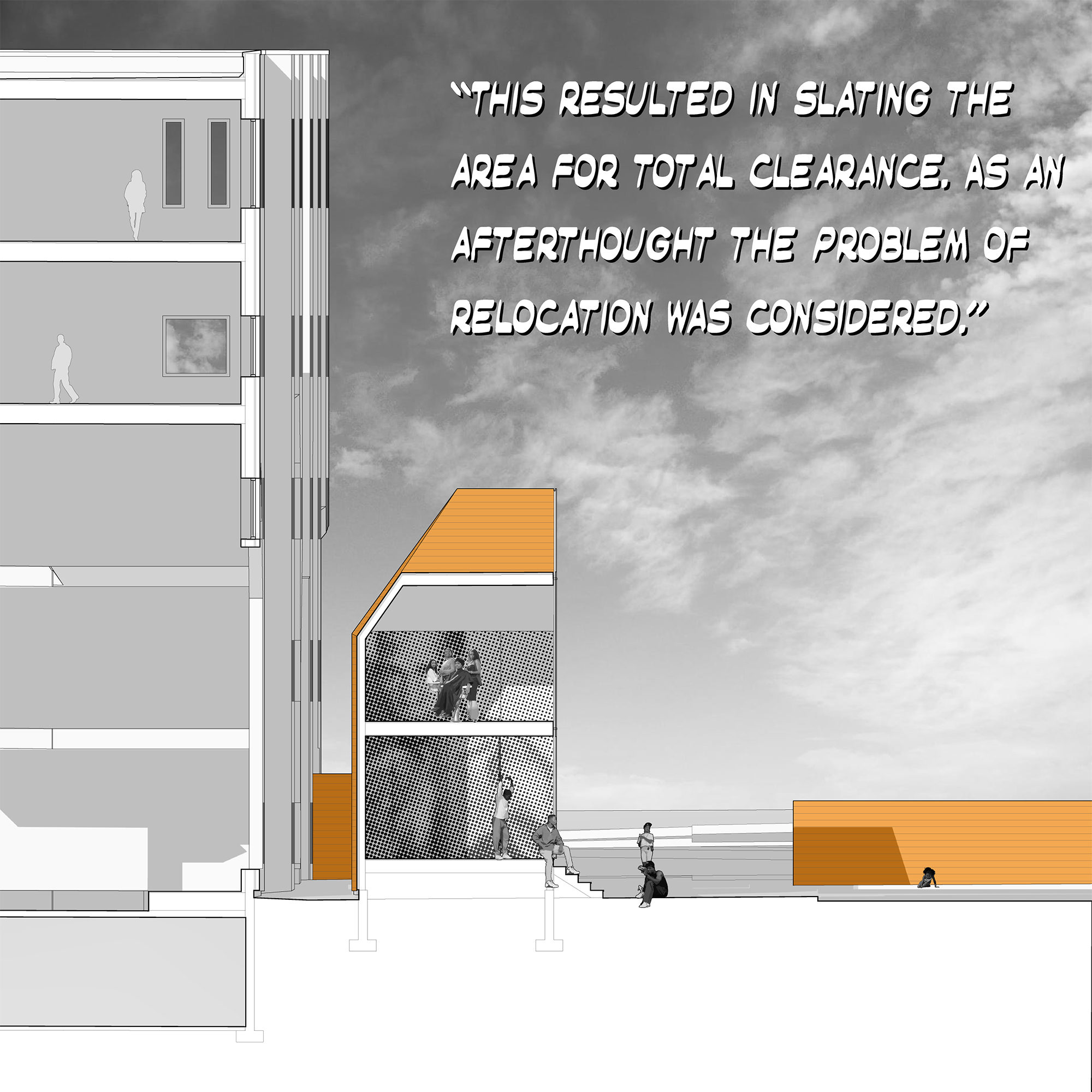
MOW: The way in which Yolande engages history is actually a much more recent history while someone like Walter Hood, who's also working in California, is thinking about the contemporary moment, of development in Oakland, the ways in which there are cranes in the sky for skyscrapers, and the legacy of the Black community in Oakland, particularly the Black Panthers, and what could have been had that not been shut down, of the level of innovation in the ten-point program, health, school lunches, etc. that actually has become policy for the entire country and yet their entire project was shut down. So he takes their ten points, and imagines along San Pablo Avenue where there are all of these social service entities, what if that had come actually from the community rather than the NGO economy? And so he built ten skyscrapers based on patents by Black inventors from the 19th and 20th centuries. He mines the history of a city, but then imagines an alternative to it.
EF: How does the process of design itself contribute to unjust building, to urban renewal, to processes that cause inequity, and how do you find this exemplified in Reconstructions?
SA: This, perhaps, is at the core of what we are trying to respond to, as well. I think we're at a moment right now in our own individual and collective history in which by observing these legacies small and large, there is going to be a reckoning of the damage that these processes—these instruments of control—have had in the built environment. I'll give you two examples. The Flint, Michigan water crisis can be traced back to the ways in which Flint was reorganized under redlining laws in Jim Crow. Where the water is the most polluted are in those areas that were deemed unsavory: predominantly Black and Brown communities. There is an essay in our field guide about environmental racism, which is a relatively new area of academic study. Even if we look at COVID-19 vaccination, it all comes around these aspects of our environment, that in cities and non-cities, different scales were defined and designed to separate people through and by racist policies, typically anti-Black policies.
That recognition, I think, is happening but perhaps not to the degree that we need because we're now facing climate change. Germane Barnes's case in the show looks at how “Negro housing areas” in Miami were predetermined on lands that are now sought after because they are less prone to flooding. These were areas of the city where people were displaced and forced to come. Those areas now are being gentrified, and again those communities are being pushed out. They've been displaced again. All of this kind recenters the racialization of the American built environment. Can design be reparative? That's a good question.
MOW: There is a certain set aspiration in America of homeownership that's constantly being upended by lending policies, mass incarceration, the inability to accrue wealth, but also simply to have a home. Diane Harris wrote a really beautiful piece in an essay about the ways in which someone incarcerated imagined home, in prison versus his imagined architecture. For him, it became a place of mental refuge. The question of homeownership is also in Amanda Williams's project in the show, which looks at Kinloch, Missouri, the first all-Black town in Missouri after emancipation. Here was this kind of Black utopia that was being imagined, as were in many towns across the nation. And yet, you could see the various ways in which every time the community would try to do something, it would roll back down; every time they tried to envision something, it would roll back down. She, too, is referencing the sort of death of opportunity for Black genius with a reference to patents, like Walter. Black inventors were never recognized or able to accrue wealth. Here was this town broken down bit by bit... Today it's almost abandoned because, through eminent domain, the city of St. Louis has basically tried to expand the airport into it. That town and the people who own that land were, again, robbed of the value of their property.
I don't know if you guys have been paying attention to the news, but there was an African American couple in Marin County, California who had bought an original house in that area. They put about about $450,000 into the house and they needed to get reappraised, I think, to get their loan and whoever appraised them gave him $50,000 over what they had originally paid for the house. They were like, that's crazy so they got the bank to do a reappraisal, got a white woman friend of theirs to basically be the person who met the appraiser and they put pictures of her family out. That house was reappraised at $600,000 over what they had paid for it. That is today; that was this month. That shows you racism is still deeply embedded and repression in steps to wealth continues.
EF: Do you believe that we can achieve collective justice in a variety of contexts via these kinds of community-based approaches, or do you think, ultimately, that the unbuilding we need to do necessitates reversing the racist policies that were set in place at a national level?
MOW: Maybe I'm an Afro-pessimist and that makes me an archi-pessimist, but, as somebody who teaches history, I'm exhausted trying to explain that to students. I think there is something in that because architecture as a discipline comes out of the West, the art of building from the start is just fraught with a racial project of colonialism. It just is how it imagines all its categories; it's a problematic discipline. And I think because of how architecture structures itself through representation, through capitalism, it's so entangled with a racial project that I feel like we have to interrogate the very nature of the discipline in order to understand how deeply embedded in it, that project is, in the formation of both the discipline in discourse and its profession. On a social level, as well, I think the Western democratic nation races the other one as capitalism, and it produces hierarchies in which some people live extremely well, and architecture builds in a place where they can survive and thrive and procreate. But it also creates these abysmal conditions for other lives that don't get the benefit of fresh water, fresh air and space to thrive. I think they're related. There has to be a kind of radical readjustment of a lot of different things in order for us to get out of this rut and to be what we so called aspire to be.
I joke that what architects always want to do is come to the rescue like “we can solve this problem!” And that's one thing about the show: it’s not about solving problems, it’s about that possibility. I think architects want to solve the problems because they don't want to interrogate the problematic structure. I mean, why are there so few Black architects?
SA: I would add that that is the opening in which community-based processes and thinking attempt to give agency in the ways in which communities can become visible again—that they can have a voice in the design, if you will, or the making of these very environments they are often forced to inhabit. It is a reparative that also induces incredible fragility. So rather than taking the pedagogical approach to architecture—both Mabel and I are architects; we've dealt with this ourselves—you can solve this problem or fix this issue or fulfill this requirement, all the while not considering that by doing so, you are effectively distancing, damaging or even undermining the very nature of what architecture can do or can be.
It becomes a self-fulfilling system. That's why we have these “bank accounts in the sky” towers, and so forth. Because it's just over and over and over again, the expression of capital writ large, rather than the expression of people writ large.
EF: Perhaps, we've lost our human approach to the built environment.
MOW: People treat property as a cash machine as opposed to a place where people actually live lives. And I think that's a big problem.
https://www.youtube.com/watch?v=WGI3XfWgW4I&feature=youtu.be
"Reimagining Blackness and Architecture" on Coursera.



